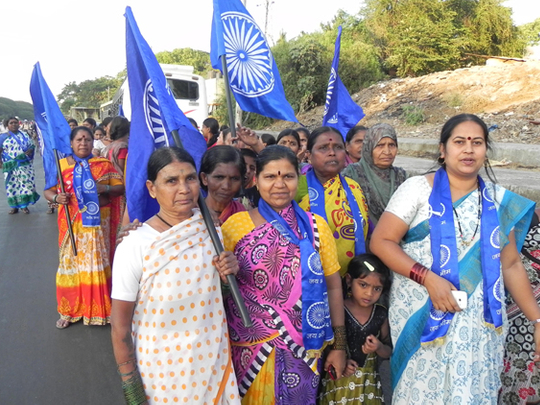
Pune: The dry midsummer heat in Pune compels young women riding scooters to wrap their head and faces with their dupatta (scarf), hoping to keep the scorching sun away from their gentle skins.
Even men try to hide behind scarves while waiting at traffic junctions. Pune’s roads are congested and traffic snarls are an eternal complaint among its residents.
But as temperatures cool down, there is a buzz around town at twilight with the old and young sauntering in to open grounds to take seats at political rallies which are galore with polling day approaching on April 17.
Puneites like to think themselves as intellectually and culturally superior to their Big Sister city of Mumbai. They could be right in many ways as Puneites are also more politically conscious than Mumbaikars — a population caught up in the ‘bhaag dhowd’ of daily life.
For years, the typical crowds at political meetings were simple villagers and slum dwellers brought in busloads, the starched white kurta pyjama-wearing party men, and women draped in multi-hued saris bearing the colours of their party flags.
But this time, new faces are appearing — a sober middle class, the educated youth, professionals, auto rickshaw drivers, hawkers and even the jhola (bag)-carrying activists.
People start streaming in for an Aam Aadmi Party (AAP) public meeting, led by its senior leader Yogendra Yadav, on the banks of the Mula-Mutha river. Two teenagers Pranita Ware and Alisha Butala are excited over the good turnout. The mood is upbeat as groups of men and women sing odes to this party whilst patriotic songs are blaring on the loud speakers.
Pranita, who has just completed the 12th standard, joined this brand new party “because they are fighting against corruption. So far no party has appealed to the youth as AAP has done. We see a new hope in Arvind Kejriwal,” she says.
Her friend, Alisha, a second-year engineering student, joined the movement right from the start — from November 26, 2012 onwards, she says with a big smile. “Corruption has risen and so has crime against women. Do you know what Mulayam Singh Yadav (Samajwadi Party chief) said recently by trivialising rape?” she says, suddenly looking serious and disturbed. “We need honest politicians.”
Sachitanand Balchandra, a middle-aged practising lawyer, who had come with his elderly friend said, “We are not here as AAP members but have come to the meeting since a new ideology has been introduced by Kejriwal to change the system.
“I feel there is a need to change the system from bottom to top so that we can have a better democratic pattern of society in our nation.
“I have attended other party meetings where people have gathered after being given money but they do not come spontaneously.”
Meanwhile, at another corner of the city, at SP College grounds, is BJP prime ministerial candidate Narendra Modi, serving his party supporters exactly what they want to hear — an anti-UPA and anti-Sonia Gandhi tirade.
The crowds are huge and so is a large section of youth turning towards the BJP for a change from the Congress-led central government.
The traditional Hindu vote, particularly of the conservative Brahmin community, is assured for the BJP. Though, Pune has the highest Brahmin population, around 20-30 per cent, in the country, it is a city where both conservatism and a cosmopolitan environment exist in harmony. Muslims, neo-Buddhists, Christians, Jains and others are an integral part of this city.
The anti-UPA wave indeed prevails everywhere and the BJP and Modi factor are being weighed favourably in comparison with other parties.












